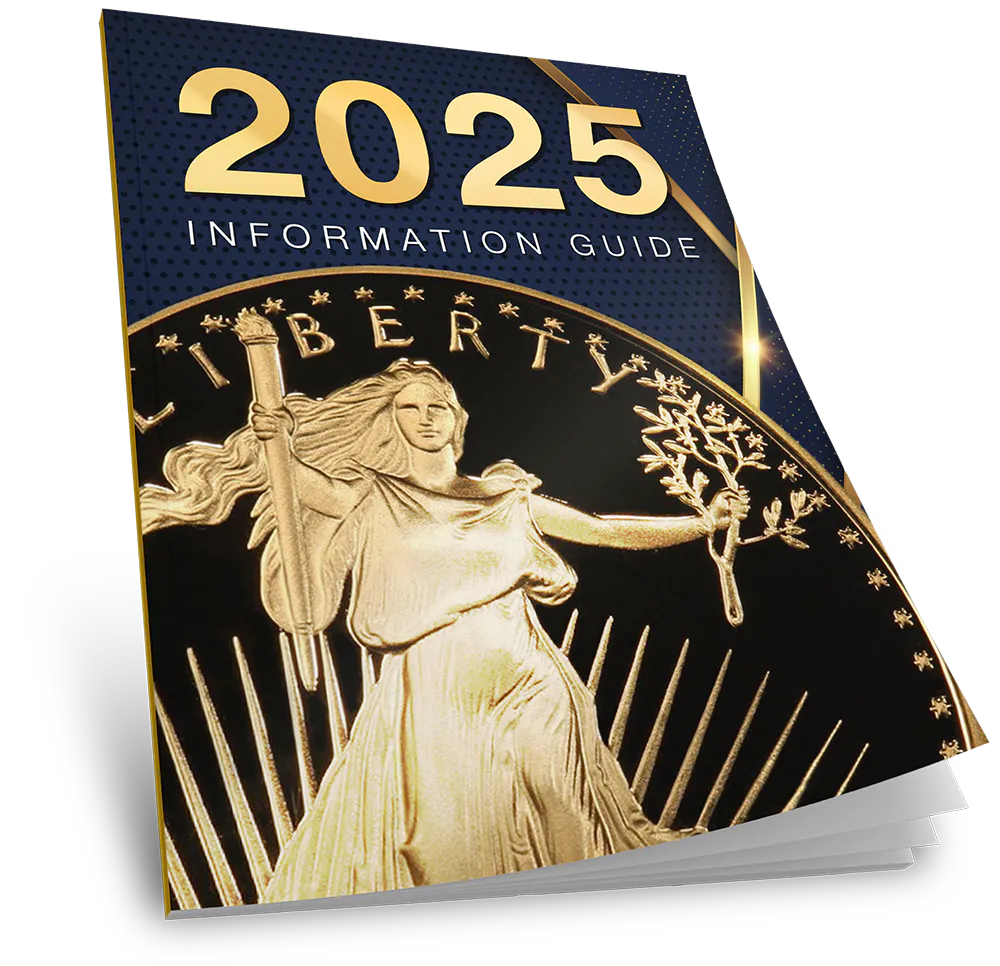Silver dimes might be the perfect solution if you’re looking for a way to protect your wealth outside of the traditional banking system. These small yet powerful coins have been a part of American history for centuries and carry real value today.
Not only do they offer a connection to the past, but their silver content makes them a tangible asset you can hold — something banks can’t offer.
This guide walks you through the key silver dimes minted throughout U.S. history. You’ll discover their historical significance, what makes them valuable, and why adding them to your portfolio could help secure your financial future in uncertain times.
What Is the Historical Value of Silver Dimes?
So, what makes silver dimes so special? Well, before 1964, U.S. dimes were made from 90% silver. That means they aren’t just worth their face value. Their silver content alone makes them valuable.
You might have heard the term “junk silver” thrown around — don’t let the name fool you. Junk silver refers to coins like these, which aren’t rare enough to be considered collectibles but still hold value because of their metal content.
In times of economic uncertainty, physical assets like silver dimes can provide a level of security that traditional banking simply can’t. While money in the bank is subject to inflation or other risks, silver holds its value. You can actually hold it in your hand, and it isn’t tied to the stock market or any digital system.
Owning silver dimes can be a smart way to keep your money safe, especially when trust in financial institutions is low. You’re not just adding another collectible to your collection — you’re securing true history that has real, lasting value.
1. Draped Bust Dime (From 1796 to 1807)
The Draped Bust dime is where it all began. Minted between 1796 and 1807, this was the first U.S. silver dime, and it set the stage for everything that followed. These coins were designed by Robert Scot, and unlike modern coins, they didn’t even display their denomination. People knew their worth based on their silver content — a far cry from today’s paper money.
These dimes stand out for their deep ties to early American history. On the front, Lady Liberty is elegantly draped in classical robes, while the reverse showcases a Bald Eagle encircled by olive branches and palms — powerful symbols of the nation’s core values: freedom and strength.
Key Features
These dimes are made of 90% silver and weigh 2.7 grams. Depending on the year, you’ll see either 13 or 16 stars on the front, representing the number of states in the Union at the time.
Valuable Dates
Draped Bust dimes from 1796, 1797, and 1804 are especially valuable. Even if they’re worn, they hold significant value because of their rarity and historical importance. For example, the 1796 Draped Bust dime had a mintage of just 22,135, making it a highly sought-after piece.
If you get your hands on one of these, you’re not just acquiring a valuable coin — you’re holding a piece of early American history. It’s a great way to diversify your portfolio with something that will always have value.
2. Capped Bust Dime (from 1809 to 1837)
After the Draped Bust came the Capped Bust dime, minted between 1809 and 1837. John Reich designed this coin, and one of its most interesting features is the display of its value in “cents” instead of the word “dime.” This shift in how people understood the worth of their currency.
Another significant development came in 1828 when the minting process introduced reeded edges to prevent people from shaving silver off the coins — an early example of safeguarding the value of physical currency. This feature still exists on dimes today.
Key Features
Like the Draped Bust dime, the Capped Bust dime contains 90% silver and weighs 2.7 grams. It was produced in two variations: a large type (up to 1828) and a small type (1829-1837).
Valuable Dates
The 1809 and 1822 Capped Bust dimes are particularly valuable. Although they are generally more affordable compared to Draped Bust dimes, they still hold significant value, especially in high-grade condition. Even if you’re not looking to spend a fortune, Capped Bust dimes offer a great way to add historical value to your collection without breaking the bank.
The Capped Bust dime is a smart option for those interested in securing physical silver with a historical twist. It’s more accessible than earlier coins but still offers value for collectors and those looking to diversify their physical assets.
3. Seated Liberty Dime (from 1837 to 1891)
The Seated Liberty dime was introduced in 1837 and was in circulation for over 50 years. This design change, created by Christian Gobrecht, reflected the evolving identity of the United States during a time of major social and economic shifts. The coin’s long tenure is a testament to its enduring popularity and usefulness in American life.
One interesting feature of the Seated Liberty dime is the addition of arrows beside the date in certain years. These arrows were added in the 1873 and 1853 mints to indicate changes in the coin’s weight due to fluctuations in silver prices. These variations make certain years of the Seated Liberty dime even more valuable to collectors.
Key Features
This dime is also made of 90% silver, but its weight varied slightly over the years, from 2.67 grams in earlier versions to 2.49 grams later on. Its diameter remained at 17.9 mm throughout its production.
Valuable Dates
Some key dates to look out for include the 1844, 1865, and 1871-cc dimes. These coins are rare, and even in lower-grade condition, their worth can be significant. The Seated Liberty dime offers both historical depth and intrinsic value, making it a great addition to any portfolio or collection.
Owning a Seated Liberty dime isn’t just about its silver content. It’s about owning a piece of history that witnessed major events like the Civil War and the Industrial Revolution. Adding one of these coins to your portfolio gives you both value and a direct connection to America’s past.
4. Barber Dime (from 1892 to 1916)
If you’re searching for a dime that tells a story, the Barber dime might just be the one for you. Created in response to public demand for a new design, this coin was minted from 1892 to 1916 — a relatively short run compared to others, which only adds to its appeal. Designed by Charles E. Barber, it offers a look at American coinage during a time of change and progress.
Key Features
The Barber dime, made of .900 silver, features Lady Liberty with a Phrygian cap, symbolizing freedom and independence. At just 2.50 grams, it’s small, but don’t let that fool you — its historical value packs a punch.
Valuable Dates
The most coveted Barber dimes include the 1894-S (an extremely rare find with only 24 minted), the 1893-O, and the 1913-S. While many Barber dimes are still accessible for new collectors, these key dates can reach high prices, especially in uncirculated condition.
Why Barber Dimes Should Be on Your Radar
With their short minting period and rarity, Barber dimes are a solid choice for anyone looking to add a piece of history to their collection. Plus, they’re an excellent way to hold real, tangible value in your hands. Whether you’re expanding your silver holdings or adding to your collection, Barber dimes offer both.
5. Mercury Dime (from 1916 to 1945)
Now, let’s talk about the Mercury dime — officially the Winged Liberty Head. This is one of the most iconic coins in the United States, and once you see it, you’ll understand why.
Designed by Adolph A. Weinman, the coin boasts Lady Liberty sporting a winged cap, symbolizing freedom of thought. On the back, you’ll find the fasces — which refers to a bunch of rods symbolizing unity and strength — alongside olive branches for peace.
Key Features
Like its predecessors, the Mercury dime is composed of .900 silver. One of its unique design elements is the “split bands” on the fasces. Coins with clearly defined bands, known as “full split bands,” are particularly sought after.
Valuable Dates
The Mercury dime has some legendary key dates, with the 1916-D being one of the most famous, minted in low quantities (just 264,000). Other notable years include 1921 and the 1942/1 variety, which are popular among collectors for their rarity and value.
Why Mercury Dimes Matter
Mercury dimes are not just beautiful — they’re a symbol of American resilience and values. These coins are widely recognized and offer a combination of aesthetic appeal and real value. Adding a few Mercury dimes to your assets can help you maintain peace of mind, knowing you’ve got something solid and reliable on your side when the economy is uncertain.
6. Roosevelt Dime (from 1946 to 1964)
Next up is the Roosevelt dime, minted after Franklin D. Roosevelt’s death in 1945. This coin was created to honor his legacy, especially his work with the March of Dimes to fight polio.
It’s a simpler design compared to some of the earlier coins, but what it lacks in flair, it makes up for in meaning. Plus, any Roosevelt dime minted before 1965 is made of .900 silver, making it valuable even today.
Key Features
Like the other dimes we’ve talked about, the Roosevelt dime weighs 2.50 grams and contains .900 silver. The design shows Roosevelt’s profile on the front, with a torch, olive branch, and oak branch on the reverse, symbolizing peace, freedom, and strength.
Valuable Dates
While Roosevelt dimes had mints in larger quantities than some of the older coins, certain dates still stand out for their value. The 1949-S and 1950-S are among the more valuable ones, especially in uncirculated condition.
Why You Should Consider Roosevelt Dimes
If you’re looking for an easy way to get started with silver, Roosevelt dimes are a great option. They’re affordable, widely available, and still packed with value. Plus, they’re a tangible asset you can hold onto — something more reassuring than numbers on a bank statement.
What Is the Role of Silver Dimes in a Precious Metals IRA?
Let’s shift our attention a bit and talk about how silver dimes can fit into a Gold IRA. You’ve probably heard about Gold IRAs, but in case you haven’t, here’s the deal.
A Gold IRA is a retirement account (self-directed) that lets you actually hold physical precious metals — such as gold and silver — rather than the traditional stocks and bonds. It’s a great way to diversify and protect your retirement savings.
Why Can Silver Dimes Be a Smart Addition?
Sure, gold might be the headliner, but silver — especially in the form of these historic dimes — can add balance to your portfolio. Owning physical silver, like silver dimes, ensures you have something tangible backing your retirement. It’s not tied to the fluctuations of the stock market or the digital world, and that’s the kind of peace of mind we could all use.
How To Get Started
Setting up a Gold IRA with silver dimes is easier than you might think. At American Hartford Gold, we guide you through the process step by step, ensuring you’re adding the right coins to meet the requirements of a Gold IRA. Whether you’re new to precious metals or just looking to diversify, we’re here to help you get started.
Choose American Hartford Gold
Silver dimes are more than just coins — they’re pieces of American history that offer real, tangible value. Whether you’re adding them to your Gold IRA or simply looking to diversify your assets, these dimes provide security in a world where trust in traditional banking is dwindling.
Ready to take the next step? At American Hartford Gold, we’re here to guide you every step of the way. Contact us today to learn more about how you can acquire silver dimes and set up a Gold IRA to protect your wealth for the future. Let’s get started.
Sources
Semiquincentennial Best of the Mint Silver Companion Medal Program | CCAC
For Collectors of the Liberty Seated Coin Series | Gobrecht Journal






